Brexit has happened: Britain leaves EU - as Boris Johnson warns of bumps in the road
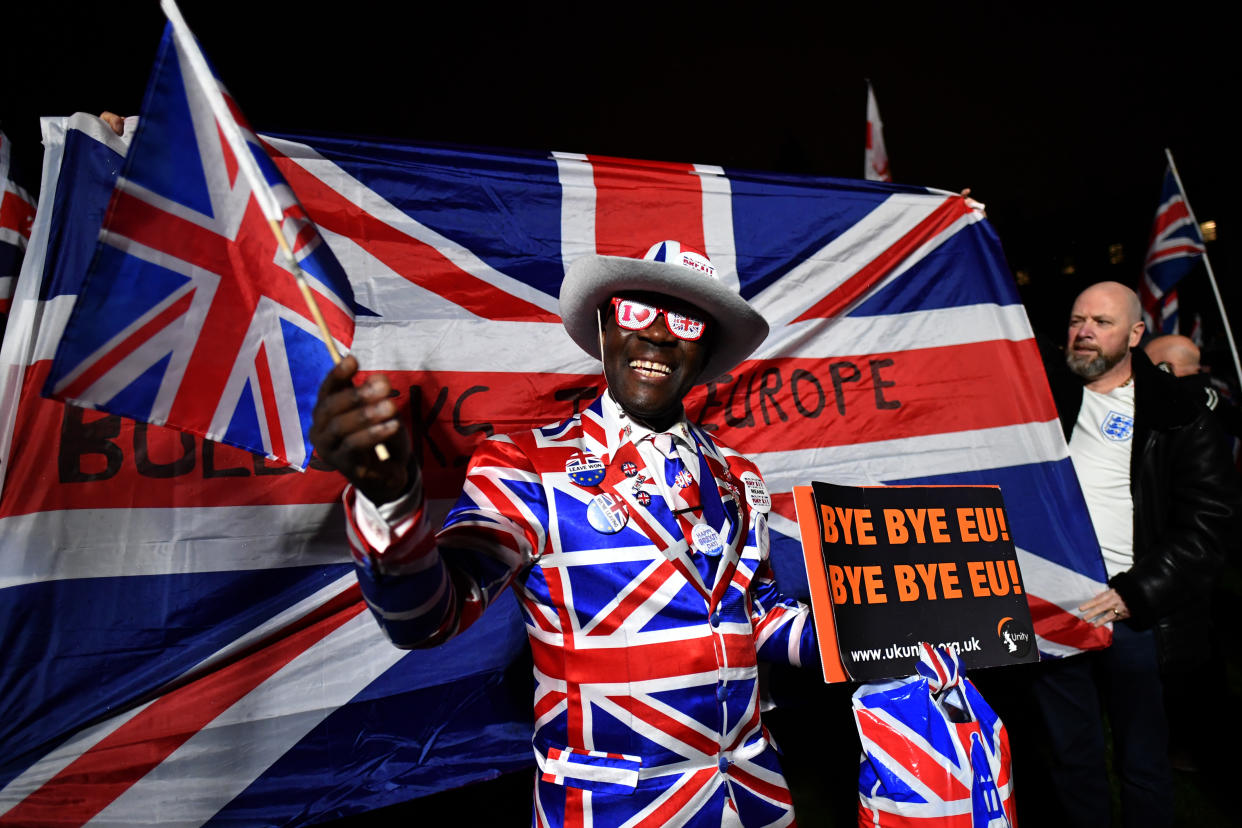
It’s official: Britain has left the EU.
As the clock struck 11pm on Friday, thousands of Brexit supporters erupted into delirious cheers outside the Houses of Parliament as the UK’s departure was confirmed.
It is one of the landmark moments in the nation’s modern history, and brings to an end a relationship which stretches back to 1973.
Boris Johnson, the man backed by the public in last month’s general election to deliver Brexit, and who subsequently steered his Withdrawal Agreement through the Commons, acknowledged there may be “bumps in the road” but insisted Brexit can “unleash the full potential” of the UK.
Tonight we are leaving the European Union. pic.twitter.com/zZBsrf4BLe
— Boris Johnson (@BorisJohnson) January 31, 2020
The prime minister acknowledged mixed feelings in a still-divided nation about the end of 47 years of close links with Brussels.
“For many people this is an astonishing moment of hope, a moment they thought would never come,” he said. “And there are many of course who feel a sense of anxiety and loss.”
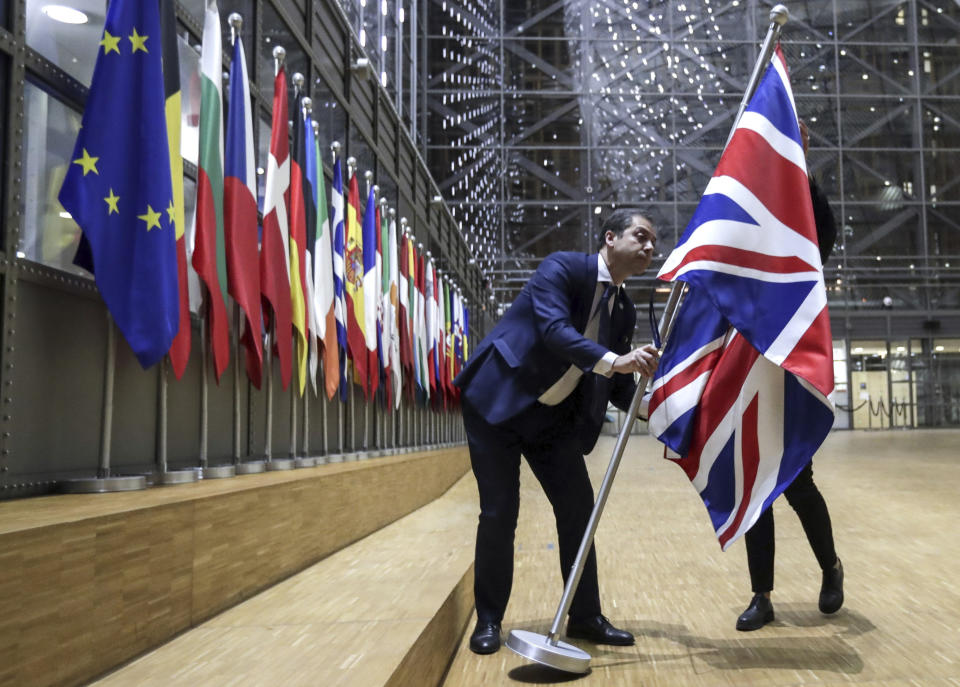
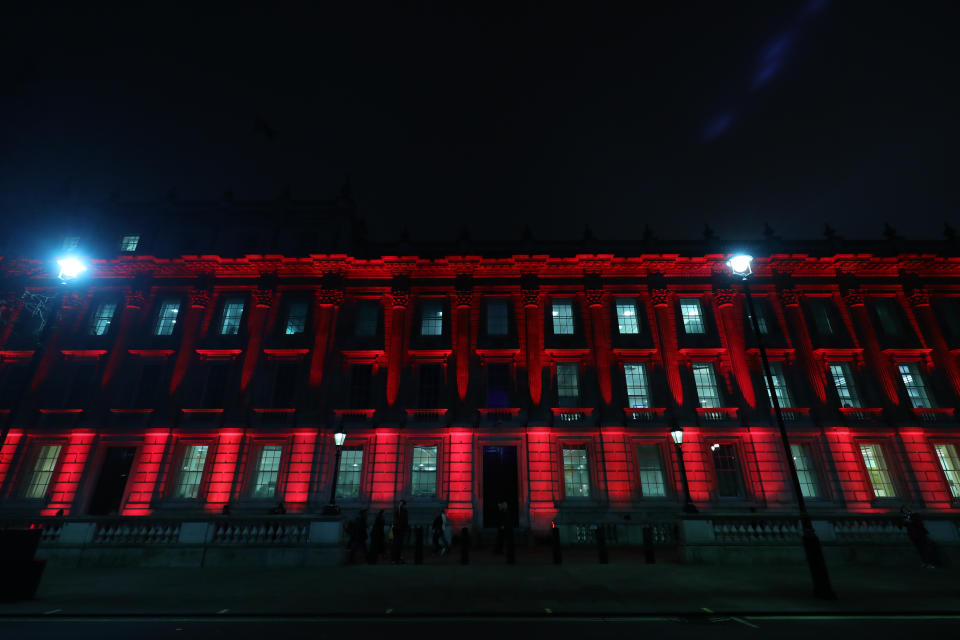
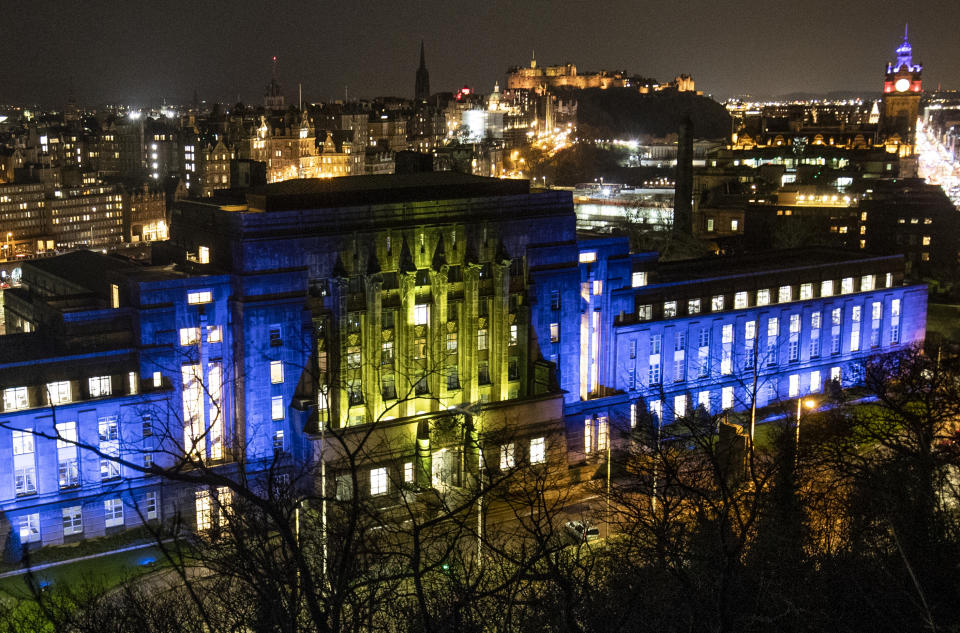
“We want this to be the beginning of a new era of friendly cooperation between the EU and an energetic Britain, a Britain that is simultaneously a great European power and truly global in our range and ambitions.”
French president Emmanuel Macron was less positive, saying Brexit was an “alarm signal” which should be heard across the EU.
The moment concludes one of the most divisive eras in British political history.
On a day filled with symbolic moments:
The Union flag was removed from the European Union institutions in Brussels
A patriotic red, white and blue light show illuminated official buildings in Whitehall and Union flags lined The Mall.
Celebrations outside Parliament
Hundreds of people gathered at Westminster for a Brexit celebration.
A music system was set up on the back of a lorry on Parliament Street, with people dancing in a closed-off section of the road to music by Sir Tom Jones and Queen.
As one man walked through the crowd with an EU flag draped over his shoulders, another man carrying the Union Flag shouted at him: “Go away loser.”
Dozens of people gathered around the Sir Winston Churchill statue, while others rang bells and banged a drum attached to a modified cart called Little Ben.
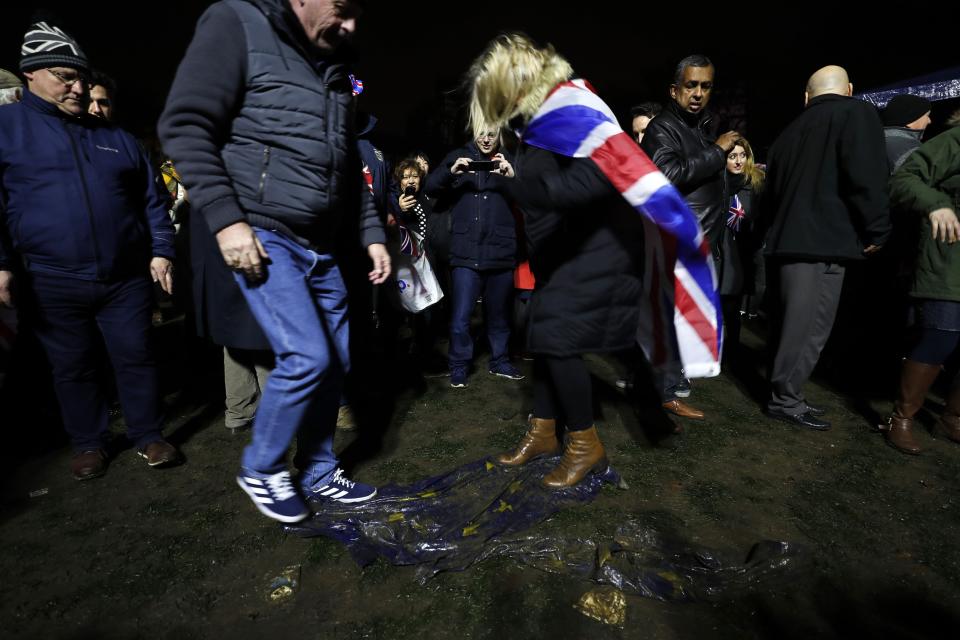
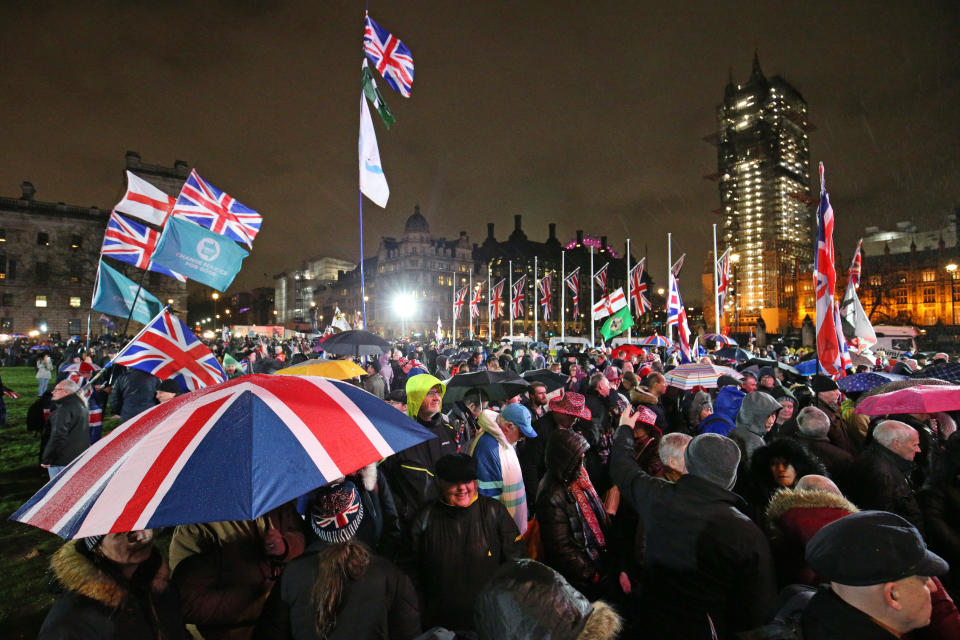
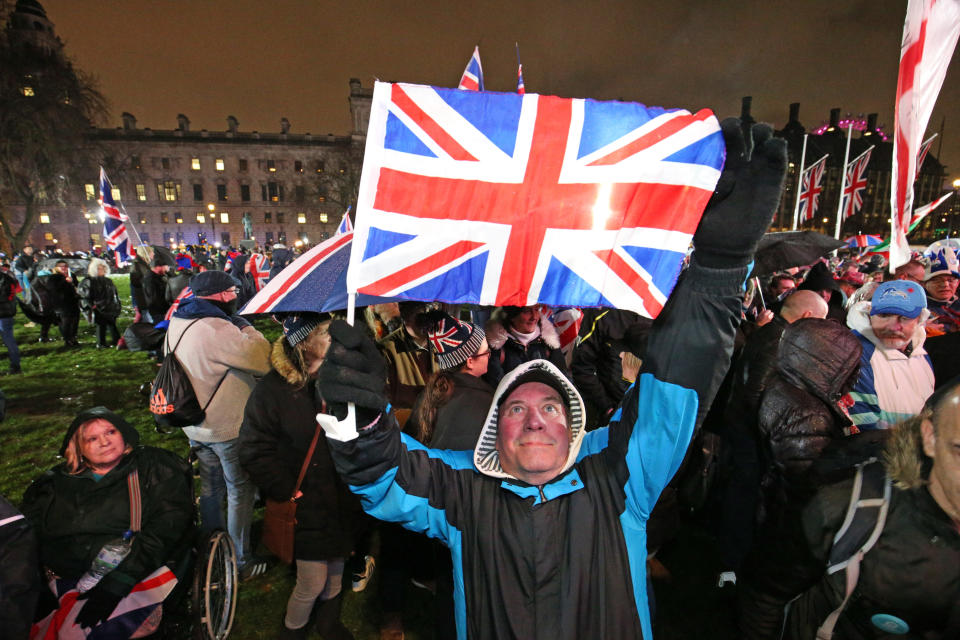
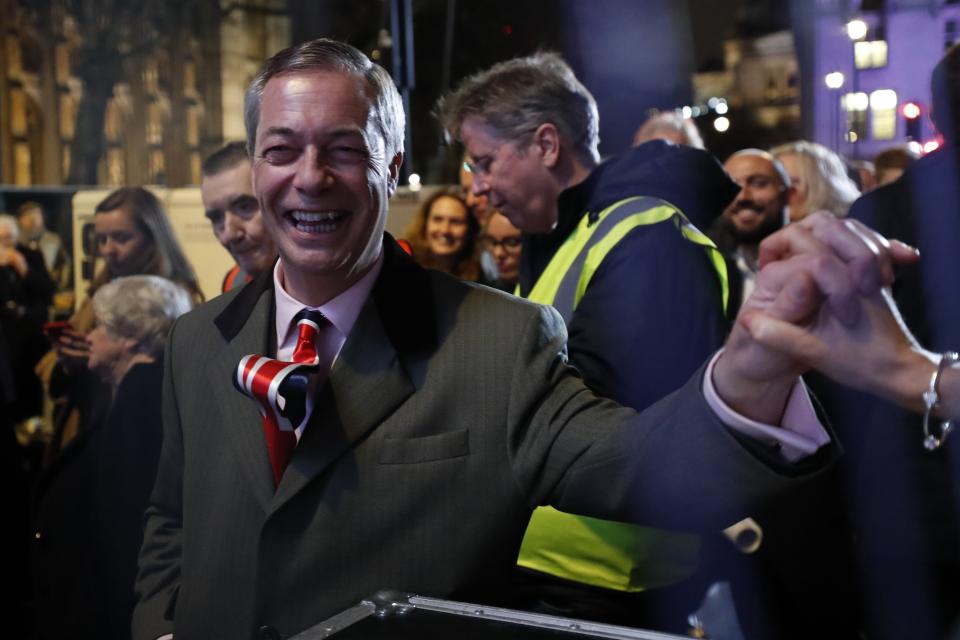
The Prime Minister, who has promised a “dignified” and “respectful” approach to the Brexit celebrations, was spending the evening in Number 10 at a reception for senior ministers, officials, and supporters of the Vote Leave campaign to leave the EU.
Guests were quaffing English sparkling wine and dining on canapes including fillet of lamb on toast, Shropshire blue cheese, beef and Yorkshire pudding with horseradish sauce, mushrooms tarts and roast chicken skewers.
How we got here
The UK’s membership of the EU had always been a fractious issue of internal Tory Party politics.
However, growing nationalism and the rise of Nigel Farage’s Ukip hauled the issue into mainstream debate in the early 2010s.
It ultimately led David Cameron, troubled by Ukip’s electoral threat to the Tories, to offer a referendum on EU membership in the 2015 Conservative general election manifesto.
The referendum was held the following year, with the Westminster establishment caught off guard by the shock 52 per cent Leave vote.
It sparked three-and-a-half years of chaos in British politics, often punctuated with ugly rhetoric and debate on both sides of the Leave and Remain divide.
Friday’s departure was 10 months overdue from the originally scheduled exit day of March 29 last year: a legacy of Theresa May’s disastrous decision to hold a snap election in 2017.
After a terrible campaign in which the prime minister was outshone by Labour leader Jeremy Corbyn, the Conservatives lost their Commons majority, causing two-and-a-half years of deadlock with Mrs May - and eventually her successor Mr Johnson - hamstrung by a weak negotiating position and a lack of numbers at key Commons votes.
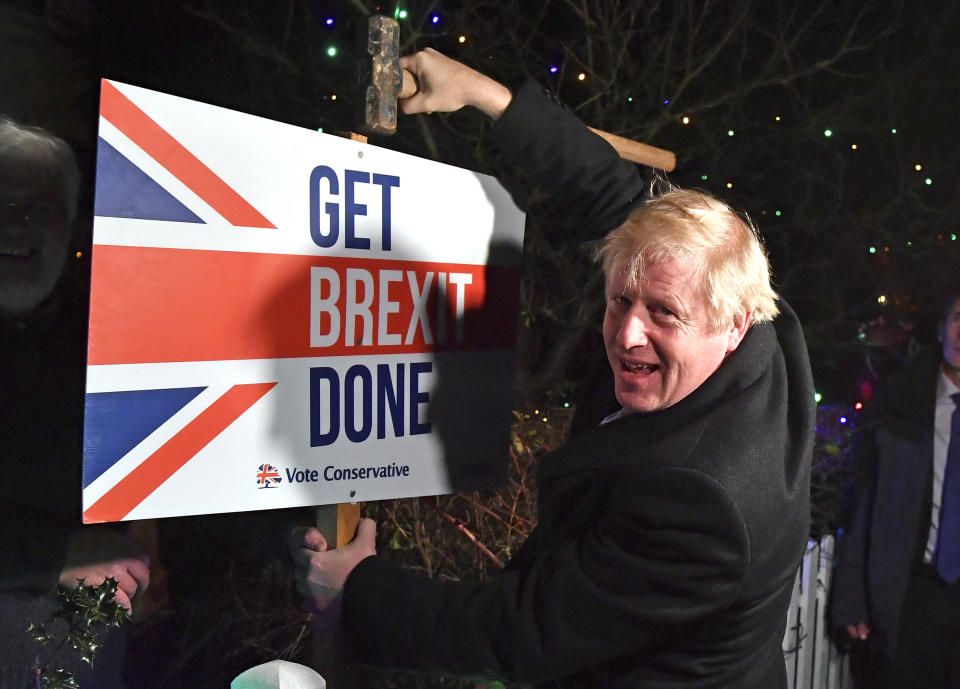
It was only when Mr Johnson was granted his wish to hold an election in December that the deadlock was broken.
Despite controversies surrounding his behaviour during the campaign, including stealing a reporter’s phone when confronted with the image of a four-year-old boy sleeping on a hospital floor due to a lack of beds, Mr Johnson enjoyed spectacular success with his “get Brexit done” message.
He won a huge majority of 80, paving the way for his Withdrawal Agreement Bill to sail through parliamentary processes and become law.
What next?
The UK will now enter a “transition period” in which the government will negotiate its future relationship with the EU. Top of its list of priorities will be a trade deal.
The transition period will run until December 31, during which time the UK will effectively remain a member of the bloc.
Key aspects of its previous membership of the EU, such as freedom of movement and single market and customs union membership, will remain in place.
This is to to avoid too much change happening at once before the UK’s future terms have been thrashed out. The only major change in the relationship is Britain having no voting rights in EU business.
Read more from Yahoo News UK
What happens with Brexit after Saturday? Your transition questions answered
How will the UK's relationship with the EU change during the Brexit transition period?
16 pictures that tell the story of five years of utter Brexit chaos
Mr Johnson, mindful of the “taking back control” narrative he has previously promoted, has insisted the transition period will end on December 31 regardless of whether a deal is reached with the EU.
If stage one of the Brexit process was anything to go by, stage two will be far from straightforward.


